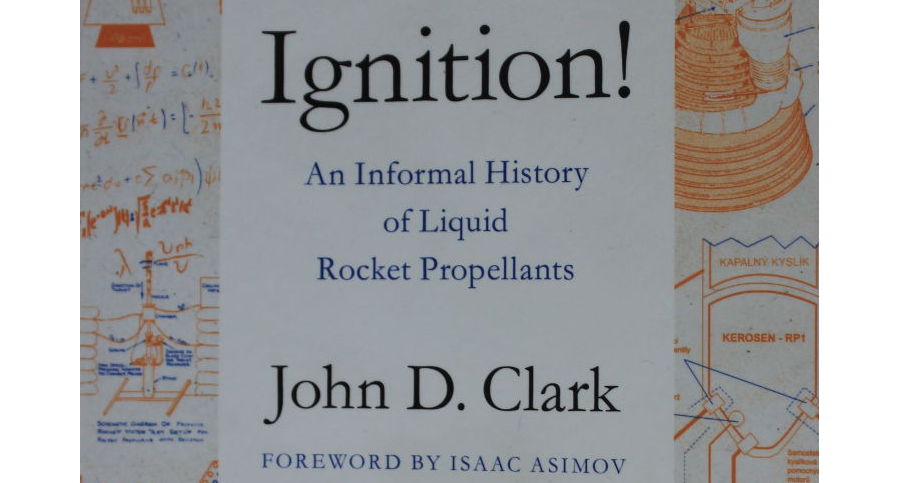Ignition!

First published in 1972, a book about rocket science would possibly seem to be out of date, but Ignition! by John D. Clark is full of interesting details about the complexities of rocket propellants that are probably just as applicable today as they were fifty years ago. I say probably because I know almost nothing about rocket science – several hundred hours of playing Kerbal Space Program really doesn’t count.
Specifically, the author was a chemist who specialised in rocket propellants, so this is a book about chemistry first and engineering a distant second (as the subtitle strongly suggests). I’m even less of a chemist than I am a rocket scientist, so I’m approaching this book from the point of view of a science fiction fan with a background in (thirty year old) A Level sciences.
Fortunately, it’s highly readable, even for someone like me who doesn’t quite understand all the chemical formulae (I can cope with H₂O, and even H₂SO₄, but when it gets to several lines of something like H₂O + HNO₃ ⇆ H₃O⁺ + NO₃ I begin to struggle). The chemical names are familiar, but remembering exactly what the differences where in the properties of, say, White Fuming Nitric Acid and Red Fuming Nitric Acid (other than, presumably, the colour) was not always easy. If that scares you, then it’s probably not the book for you.
But at the end of the day, it doesn’t really matter. If you’re not actually trying to blow your head off by making rocket fuel, and are just reading it (like I was) because you have a high level interest in the topic, then the specific details are a bonus, not a necessity.
Prior to reading this I knew that different fuels have different properties that improve (or don’t) the efficiency of a rocket, but the (often humorous) discussions about all the other problems cover issues that most people probably haven’t thought about.
It’s obvious that how hot the fuel mixture burns is important, since a hotter burn means more thrust. But if it produces a cloud of burning, acidic and poisonous fumes in the exhaust then that’s not so good. Or leaves behind a residue that clogs up the motor. Or sometimes doesn’t always start (bad). Or sometimes starts when it shouldn’t (very bad).
Otherwise perfect combinations can be useless because they freeze below 20°C (the fact that the American book mostly uses Celsius rather than Fahrenheit is a huge bonus) or boil above 30°C. If your rocket is sitting in a nice temperature controlled missile silo, then maybe it doesn’t matter. If it needs to be launched from a mobile platform, it can be a deal killer. How bad is it if there is a leak? Or does it decay over time, or eat through the metal fuel tanks? Or even react with the metal to produce something completely different?
This is both a history book that covers the research into rocket propellants for the middle of the twentieth century, and also personal anecdotes of someone who actually worked in the field during this time. It’s laugh-out-loud funny at some moments, highly interesting and detailed at others, and definitely worth a read if you have an interest in the subject, even if you know that you’re not going to understand all of it.